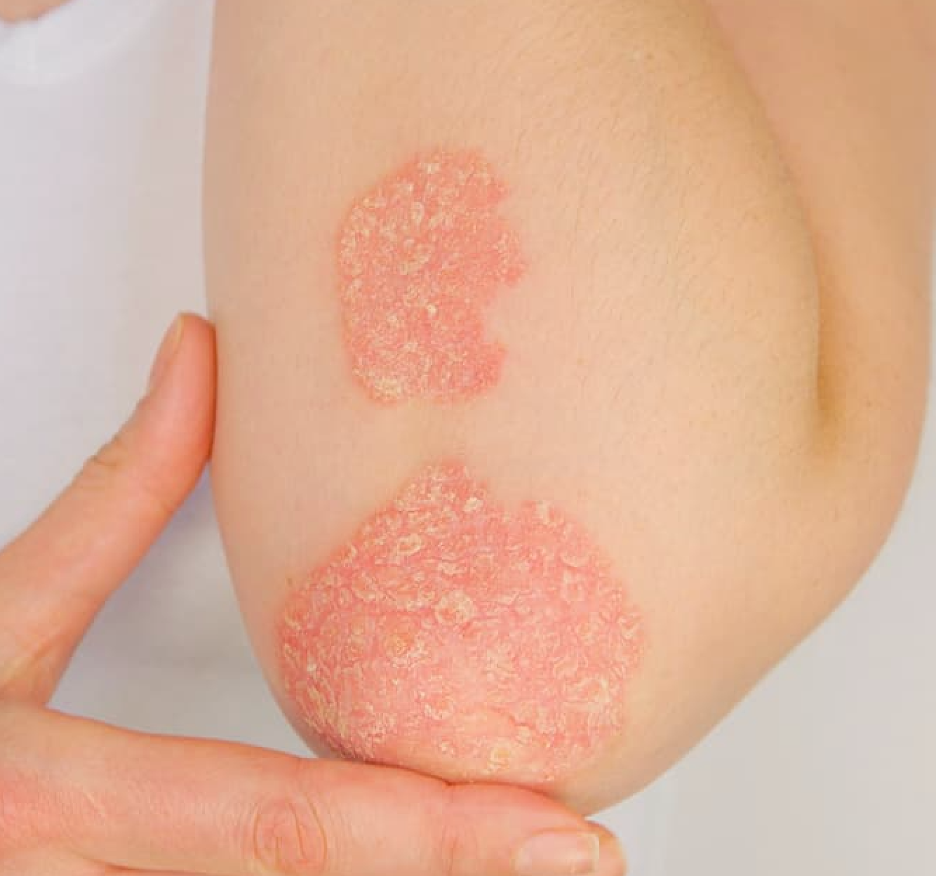Nationwide Study Highlights Infection Risk Levels for PsA Patients on Different Treatments
These data on patients with psoriatic arthritis point to risk levels for new adalimumab users as well as users of ustekinumab and etanercept.

Serious infection incidence is low for individuals with psoriatic arthritis (PsA) who are also new targeted treatment users, according to new findings, with risk being diminished among those given ustekinumab and etanercept compared to adalimumab.1
These results were the conclusion of recent research into the use of various classes of targeted therapies for patients with PsA, and the study’s corresponding author was Laura Pina Vegas, MD, MPH, of the Henri Mondor University Hospital (APHP) rheumatology department.
While there had been existing research demonstrating distinctions in serious infection risk among individuals newly using various drugs, such research had primarily involved patients with other rheumatic conditions or plaque psoriasis. Consequently, this information was considered difficult to extrapolate to those that have PsA.2
“Therefore, with the emergence of increasingly targeted treatments, there is a growing need to know whether some of those drugs have a better profile than others in terms of infectious risk,” Vegas and colleagues wrote. “The main objective of this study was to assess and compare the risk of serious infection with different targeted therapies used to treat PsA in a large and exhaustive French population.”
Background and Methods
The investigators looked at data that had been drawn from the French national health insurance database, known as the Système National des Données de Santé (SNDS). The database itself is linked to the national hospital discharge base and contains health insurance system data on residents of France.
Around 99% of the French population is covered by the SNDS, with approximately 67 million individuals. Various data were available to the research team on outpatients such as patients’ sex, year of birth, region of residence, eligibility for complementary universal health insurance, vital status, pharmacy-provided treatments, and eligibility for reimbursement with conditions such as PsA.
As far as criteria for inclusion, the investigators determined that all adults patients known to be 18 years and older who had PsA and were registered in the SNDS from January 2015 - June 2021 would be let into the study. The team identified individuals with a single prescription for a targeted therapy and placed their focus on new medication users defined as those who had not filled a prescription for targeted therapies for at least a single year.
They excluded from their research individuals with a history of cancer, HIV infection, any transplantation, or serious infection diagnosed through hospital discharge in the two years prior to the index date.
Among the treatments assessed in the study, the team looked at certolizumab pegol, adalimumab, golimumab, etanercept, and infliximab (TNFi); ustekinumab (IL-12/23i); ixekizumab and secukinumab (IL-17i); and tofacitinib (JAKi). They determined their primary outcome to be assessment of serious infections needing hospitalization.
The comparator used by the investigators was adalimumab. The team estimated weighted hazard ratios (wHRs) along with their respective 95% confidence intervals (CIs).
Findings
There were 12,071 participants, with an average age of 48.7 years, recruited for the purposes of the study, with 57.7% reported female. The research team were able to identify 367 serious infections, among 3.0% of the subjects specifically, and there was a crude incidence rate of 17.0 per 1000 person-years (95% confidence interval [CI], 15.2 - 18.7).
The team noted that following their application of inverse propensity score weighting as well as adjusting for time-dependent covariates, there was a substantially lower risk of serious infection among newer ustekinumab users (weighted hazard ratio [wHR], 0.57; 95% CI, 0.35 - 0.93) or etanercept users (wHR, 0.72; 95% CI, 0.53 - 0.97) or compared to new users of adalimumab.
The investigators added that the risk difference was shown not to be statistically significant with the other targeted therapies looked at within the team’s research.
“Considering the number of current treatment options for PsA, further studies, especially of other large-scale cohorts in real-world settings, are needed to confirm these results and evaluate the most recent treatments to help physicians optimise their therapeutic choice for each patient,” they wrote.
References
- Bastard L, Claudepierre P, Penso L, et al. Risk of serious infection associated with different classes of targeted therapies used in psoriatic arthritis: a nationwide cohort study from the French Health Insurance Database (SNDS) RMD Open 2024;10:e003865. doi: 10.1136/rmdopen-2023-003865.
- Li X, Andersen KM, Chang H-Y, et al. Comparative risk of serious infections among real-world users of biologics for psoriasis or Psoriatic arthritis. Ann Rheum Dis 2020;79:285–91. doi:10.1136/annrheumdis-2019-216102Abstract/FREE Full TextGoogle Scholar.